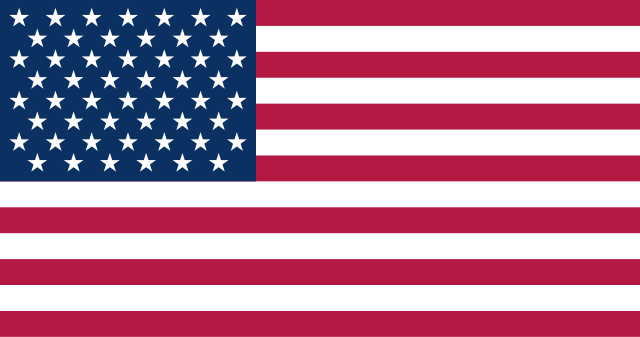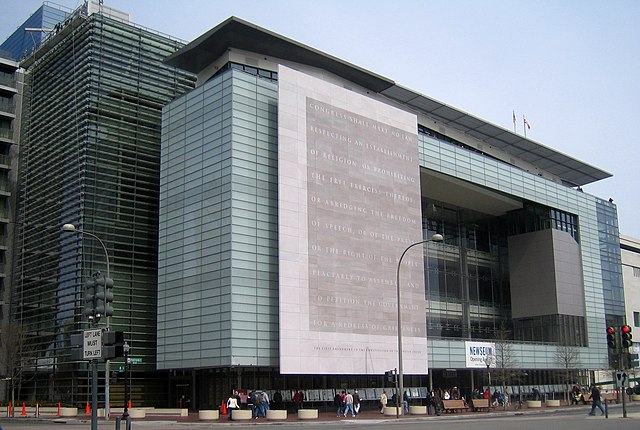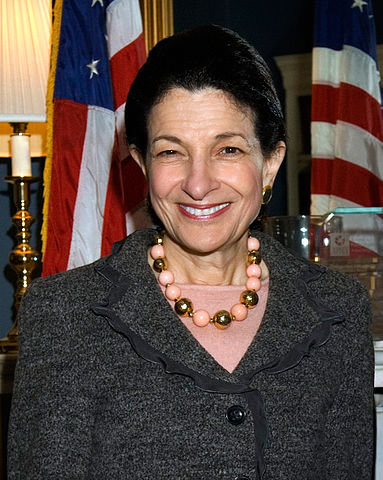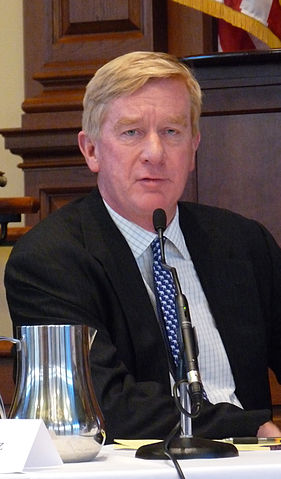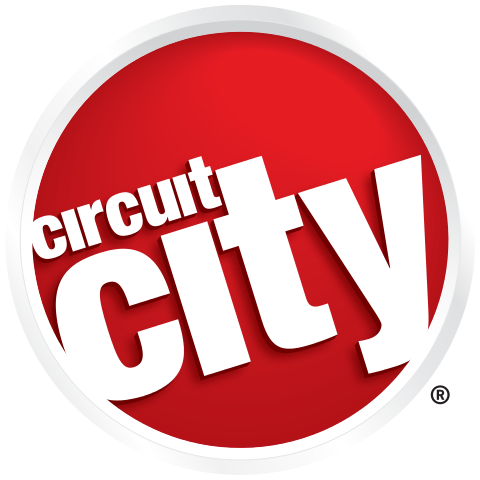Culture Reflection: 2004-2006
The mid 2000s was a combination of easy-going progress, but also social change going on. The economy was still humming along pretty well and people still enjoying their lives all in all. It was looking like some sort of "end of history" would be arriving over at some point or another. The death of former Presidents Reagan and Ford further symbolized the end of the old ways of doing things, especially for American conservatives. For China, the death of Zhao Ziyang would also be the beginning of another transition as the guiding light of China post-Cold War and its driving force for political reform would be gone, and his torch would be carried on various successors. From the student protestors from decades ago now becoming politicians to the new wave of thinkers and even a couple of his proteges, they would be the ones to carry and finish his dream of a China fully democatized. The Koreas continue on their path of reunification; while they had to extend the tranistion period, they added additional integration steps and time to ensure that the process would work and showing they truly believed in a future as one nation. While there was some trouble as seen in places like Sri Lanka, there was plenty of hope that these troubles would be resolved. And there was still the hope for change as President Clinton was becoming a little more ambitious.
General Trends
The reelection of the Clinton Administration would show that alot of things would likely be going similarly like how they were going back in the past few years. And to be fair, alot of the similar trends were going on. The decline of the automobile for example was still going on. While the rate of decline has slowed down, it was still quite a notice from how things were 5 years ago and especially 10 years ago. To where there was a growing generation of young people for whom this decline in automobiles would be a norm for them, that of the Millenial generation (born 1992-2006). Some were the youngest childen of the younger Boomers (born 1946-1961), but mainly they were the children of the generation of the Brightbangers (born 1962-1976). Coming up after the Freeborn Generation (born 1977-1991), they would be those born and raised in the 1990s and the 2000s. Those who were born without knowing the Cold War and in an era of a new status quo, such as the new voting methods of the United States, the Sovereign Union's birth and the rise of the European Union would be the norm for them. For those born and raised in surburbs, many of them would see the growing expansions of public transportation into their neighborhoods. From examples such as bus routes connecting neighborhoods and shopping squares together to entire cities being connected as part of a growing urban area, these new introductions would entice them and bring them on board, letting them see more and more of their town, city and region. Others who lived in larger areas would rely on more affordable means like motorbikes or motorscooters, which would allow them further autonomy.
Despite this, the automobile industry was not dead yet. After all, there would still need to be a need for automobiles, but the question of fuel needs to be answered. Overall, it was looking to be neck and neck between hydogen fuel cell and electric cars. While battery tech growing gave an advantage to the latter, the concern of rare materials was brought up. Both also required power still though the growing presence of renewable energy mitigated that. Indeed, to alot of data, they were just a short years from reaching a threshold of sorts with solar and wind power. With this being reached, renewable energy helping vehicles would make it alot easier, such as "green hydrogen". The major governments were keeping a close eye on it as it would decide the future of infrastructure. But even now, there was still some fascinating advantages. Biofuels from scraps and leftovers were helping to aid things. One example would be the growing number of buses running on biogas or their purer form in biomethane. And of course, there was some places over with electric rail and the like. Things were growing more interconnected and in more ways than one. Widespread adoption of the Internet kept growing at an unstoppable rate. Brand new websites were appearing like ConnectU, a competitor to Myspace in social media, new ways to do social media over with Twitter and Reddit, or video websharing websites over like YouTube and Veoh were providing massively new opportunities for people of all ages to share and communicate with one another. YouTube and Veoh especially as the former has been bought by Google and there is a growing surge of content being uploaded. Other companies have now been looking into Veoh, with the big name being MSN Software and Akashica. Outside of websites, there was brand new software like the internet browser Firefox, which may be looking to be the successor to Netscape and in communication software, there was the P2P tech powered Skype.
Speaking of computer, MP3 players were becoming more complex and prominent with the NeXTech NexPlei and the Microsoft Zune being the big names there. NeXTech and Microsoft also were competing still over in the computer battlefield though Sun Microsystems were also making a surprise presence. Meanwhile, there was also the growing presence in some areas. Sun Microsystems kept their popularity in Japan and began expanding to other pats of Asia and even Brazil while NeXTech were making inlands over in Europe and all of them also outreaching in Latin America and expanding. While Microsoft may still be setting the gold standard, the other companies' focus on growing internationally was paying off for them. Othe trends were also being noted over across the world. Fashion was entering a strange place as there was more clothes being made than could be bought and the concerns over resource usage was looming over them. That said, some trends did survive over thanks to niche apparel aimed at subcultures or groups. After all, malls may have been grown more localized by their communities, but they still shares various stores across the board such as Hot Topic, Spencer's and various others, with them managing to appeal to subgroups to remain in business. It helped that outside of fashion, the stores' appeal to brand allowed them to focus on a variety of items besides clothing over time. However, it was a noticeable trend as various businesses were having to think on how to sustain themselves long-term, especially with how the tastes of people have changed over the last 25 years or so thanks to a variety of factors. People were more willing to purchase experiences and services over objects and the value of objects lasting longer has returned, forcing how people think on shopping. There would still be subgroups and niches that would be reliable enough to sustain these businesses, though the future would lay in trying to be consistent and versatile.
From a cultural standpoint, it was a period of slowdown and relaxation. It really seemed like it would be some upcoming peaceful times. After all, the economy was still going strong and there was not much conflict in the world. For some, it was a period of building up or reconstruction though. At the same time, there was also some thought over if all of these good times would last. The growing rise of computers and the internet would be exceeding what some thought and it was changing into something different. Meanwhile, the economy continue to change and evolve, especially as the internet was becoming more important in the lives of people. Companies requiring better websites, the communication more through email and the like, it was becoming clear these changes would be unavoidable. As for social changes, it was still a bit complicated. While SATMIN+ acceptance has become more and more the norm, there still remain troubled teens from bad homes and the like that need to be taken in, though by organizations to help or by friends, as the upcoming generation show more tolerance and compassion than their predecessors. Another would be the increasing popularity of mainline Protestant churches. While their returning significance has been occuring since around arguably the early 1990s, the impact here has become much more notable, partially thanks to the growing prominence of neoclassical conservatism.
Films
Films of around the time would be rather varied, but there would be a few fascinating trends. One would be the continued competition over between Dreamworks and Disney regarding their animated films, with both of them releasing plenty of classics. Dreamworks would release
Shrek 2, the sequel to the original
Shrek, which manages to top the original by exploring the ramifications of the previous film. They would also make their first successful trilogy in their adaptations of the
Monkey Island computer game series. Being distinguished from their source material with a combination of streamlining the plot and some fresh writing, it would bring plenty of popularity to the series as a whole. Many were citing Don Bluth's continued presence over at Dreamworks for their continued success with hand drawn animation though he would also branch out into mixing handdrawn and CGI, such as with
Dragon's Lair the Movie, showing a further willingness to push the envelope along with being experimental. Disney would also be going more into some experimental aspects along with a couple of surprsing decisions.
A Few Good Ghosts would be a fun musical with an animation style combining stop motion and 2D computer animation with Dolly Patron as a prominent musical presence and a second samgen couple in a Disney film.
Tam Lin would be a long-awaited passion project of Scottish folklore with hand-drawn animation taking inspiration from impressionist paintings and wood carvings along with CGI in the villain. And moreover would be the sequels for
Treasure Planet and
Atlantis: The Lost Empire, showing a suprising interest to do sequels, at least theatrical ones as opposed to the direct-to-video ones that Disney occasionally did. And of course, there was also what Pixar is doing under Disney such as with
The Incredibles and
Cars, which is considered to be the first mixed-receptive film made by Pixar.
Beyond that, there would be some other animated surprises such as a sequel to
Ice Age, Wallace & Gromit: The Curse of the Were-Rabbit and a trippy animated version of
Charlie and the Chocolate Factory. And moreover would be the increase in Japanese animated films getting similar theatrical releases, likely thanks to what has been established with Miyazaki films and other works like
Akira. One would be
the Animatrix, which was a cooperation between American and Japanese teams that served as a prequel-sidequel anthology to
The Matrix trilogy. Miyazaki would also release another big hit over with
Howl's Moving Castle that continued to dazzle and delight. One big news was hearing
Katsuhiro Otomo, the director of
Akira, having directed a new film over in
Steamboy. Thanks to some good marketing, the film would be able to make back its budget and then some, getting the same sort of effect on the youth while steampunk afficionados would also adore the film. The dark horse popular one would be a new film that managed to get dubbed in time before the end of 2006 in
The Girl Who Leapt Through Time. Not as bombastic or dazzling as some of the other films, it would still become popular because of its charm and also standing out for how different it was compared to others. It was a show case that Japanese animation had more to provide than action and had a whimsy and charm of its own, further bewitching the audience, especially the youth.
Of course, there were still plenty of live action films with pop culture, traditional Hollywood, and more. The two new
Star Wars trilogy was reviving the franchise and showing it had plenty of life in it. The Matrix trilogy would wrap up over in this time and its embracement of gnostic themes would continue to lead to questions and thoughts on the film over time. Some new trends would be seemingly appearing over in Hollywood here. One would be something called the "YA trend", a phenomenon of adopting novels aimed at young adults and capturing the youth audience. Ironically though, the film series that would kick this off would be none other than the Chronicles of Narnia, which is not an example of YA work, but would still capture a sort of spark. Meanwhile, superhero films were definitely returning in vogue. The X-Men trilogy would wrap up over at this time while DC would release two new standout films of their own with Christopher Nolan's
Batman Begins and the new
Superman Returns, a loose adaptation of the "Sueprman: Birthright" miniseries. Of course, the more traditional projects would still have their presence.
The Passion of the Christ would show that contoversial films would still have their place.
Shaun of the Dead and
Napoleon Dynamite would show that odd humor would still have a strong following.
Brokeback Mountain would be a bit of a callback to the days of "queersploitation" films, but here done better, with some considering it a bit of a reconstruction of it and showing the growing mainstream presence of SATMIN+ people. Perhaps the surprise hit over would be the documentary
Sugar High by Morgan Spurlock. While the dangers of consuming too much sugar was well-known, what got attention from people would be the widespread practice of companies incorporating sugar into products, the dark side of the "fat-free" movement there and the general duplicitious nature of it. As such, it was less an attack on sugar, and more on the corporate practices behind it.
Television
The era of television would be defined with various transitions. The end of
Friends seemed like a pretty good cultural milestone of the time and other big shows would end here such as
Arrested Development,
That '70s Show, The West Wing, Will & Grace,
Alias and
The FBI Files, but most notably would be
Soul Train. To where attempts at reviving the last one would be planned to be attempted by a growing group of dedicated fans and individuals. Of course, there would still be all sorts of new television shows coming on. Regarding trends, nothing really significant has appeared yet though some have noticed a few of the shows would be ending some of their highlighted classics. Within animation, a fair number of these shows came out at around the same time as part of a generation and would be approaching their end soon. But at the same time, new trends would be coming over. From medical dramas like
Grey's Anatomy and
House MD to crime investigation shows like
NUMB3RS and
Psych and science fiction over with
Battlestar Galactica and
Stargate Atlantis. And then there were new comedies over like
The Office, which explored the comedic troubles of dysfunctional corporate culture along with the lives of the people of the company along with a bit of the economic truths behind it. There was a growing variety of television shows to appeal a wider audience of people, with differing niche appeals. There was also the growing variety and acceptance of minorities, especially SATMIN+ folk over on television. As supporting characters and a couple protagonists over... slowly but surely, there is a growing variety of these sort of characters appearing on screen.
Another trend would be the rise of superhero media, outside of just DC and Marvel. Beyond
Heroes over in live acton, there were some new shows. Cartoon Network would get a strong new franchise with Ben 10, starring Ben Tennyson, a biracial boy who would get the mysterious Omnitrix on summer vacation with his cousin Gwen and his paternal grandfather Max. White on his father's side and black on his mother's, he was quite a refreshing face to see and would become an inspiration for quite a growing number of kids growing up. Another show of the superhero trend would be
Bobby Phantom over on Disney's Jetix, a reimagining of the Bob Phantom comic property they had. Other examples would be more different, like MetroKids'
American Dragon Jake Long and so on. Nick would also bring anothe gamechanger with
Avatar: The Last Airbender, as showing how anime was having an influence over in US artists. Beyond this, there was also the growing new franchises, such as the new Star Wars cartoons appearing over on television. Anime would continue growing over on television. Toonami was becoming more and more prominent with how many ratings it was getting for Cartoon Network and Disney would try and capture some of that over with Disnippon, their own anime bloc over on the weekend, though with a focus on anime for younger audiences along with shoujo and slice of life. Shows aired on Disnippon included:
Hamtaro, Cardcaptor Sakura, Revolutionary Girl Utena, Princess Nine, Slam Dunk,
Azumanga Daioh and
Magical Girl Lyrical Nanoha. Adult animation would continue on thanks to
Futurama and a new show over with
American Alien, though they still followed the conventions associated with Western Adult Animation, namely crude humor, swearing and various references to older pieces of work. Which, while enjoyable, would begin reflecting on a potential trend of the lack of diverse genre and the like for animation aimed at older audiences.
Video Games
This period of time would be the latter half of the sixth generation of video game consoles. The experimentation and refinement that defined this generation after their 'Devonian Leap' from 2D to 3D in the previous one was still going strong as old franchises would get revived, current ones got new additions or just some new ones being born over. There would also be the growing changes and cooperation over between the companies. SEGA would begin to formally leave the console market, focusing over on their game properties and creating games over for the other consoles. As for some of the big games created at the time, it included, but was not limited to
Paper Mario: The Thousand Year Door,
Metrioid Prime 2: Echoes, Krion Quest II, Halo 2, Half-Life 2, Kameo: Elements of Power, Legend of Hyrule: Twilight Princess and most notably Sonic Revolution, which celeberated 15 years over of Sonic the Hedgehog, but would also be the last game worked on by Yuji Naka before he would depart from SEGA and go his own way. All the while, there would be the upcoming new consoles previewed. While the Playstation 3 and the Abox 360 would be looking to be more of the same, albeit with greater power and capabilities, the Nintendo Wii would be looking to futher change the game with the introduction over of motion control.
As for handheld videogames, it would still be dominated by Nintendo's Super GamePal. There was the remake of the Gen 1 Pokemon Games with
Neo Red,
Neo Green and later
Neo Yellow, along with
Metroid: Zero Mission regarding Nintendo releasing remakes. After all, it helped introduce new fans to older games of the franchise and lay future groundwork for what would come ahead. Other games of note would be
Legend of Hyrule: The Minish Cap, Kirby & The Amazing Mirror, Mario and Luigi: Partners in Time and the
Cyberknight Ziro and
Megaman Battle Network series. Sony would also begin entering here with its own handheld console with the Playstation Portable and near the end, Nintendo would bring about the successor of the Super GamePal with the GamePal DS (DS standing for Dual Screen). Beyond having better hardware behind it, it would be notable for having a second screen, over on the bottom as a touch-screen, along with a stylus. This would present alot for future games, as seen with launch titles like s
Super Mario Bros DS, Animal Crossing: Wild World, Sonic Rush, Mario Kart DS, WarioWare: Touched! and
Kirby: Canvas Curse. Computer games would also grow in prominence as computers would become even more powerful and Internet access more widespread for people. This would be beginning the rise of MMORPGs, especially
World of Warcraft while a bigger boom would be coming over with the release of
Cave Story, which many would say would be the quintessential
indie game for the development team of one man and showing what could be done just by themelves.
Music
Music would keep on growing with new stars and new talent. Rap and hip hop would reach the mainstream despite sticking to their roots and growing ties of doing things different. While names like Tupac and the Notorious B.I.G. would still be around, they would be joined by a growing number of new talented folk such as Usher, Beyoncé and Kanye West. Beyond being influenced by the times, they would also be influenced by the Old Guard, especially with some of the directions of their music and careers. After all, with the Napster-ArtistShare connection, there was almost a new growing music underground that would allow for fame, but also the chance to remain grounded and in control of your music. While some of the trends earlier on like the riot grrl movement was becoming less dormant, there would also be new things like riot grrl rap and of course the traditional growing trends such as with pop music and the like. Punk and the like would still be around, dealing with the disaffection of the young and existenial themes along with more traditional themes.
Some new things affecting the world of music would be the growing rise of social media. Websites like MySpace, ConnectU and Twitter were becoming more and more important for artists to connect with fans and to manage their reputation, especally as it was looking to be a permanant facet. The introduction to so many over on the growing megapublic forum would be introducing and influencing artists with groups they wouldn't picture. Another influence, albeit one that would not be noted at this time would be YouTube. As for songs, there would be "We Belong Together" by Mariah Carey as a popular one along with others such as "You and Me" by Lifehouse, "Since U Been Gone" by Kelly Clarkson, "Dani California" by Red Hot Chili Peppers, "Move Along" by the All-American Rejects and "Saving Me" by Nickelback among many various others that were formed of the time. Music right now was focused on all sorts of direction, especially with the relative calm of the world though pushing the envelope remained an aspect for many of the musicians. This along with the independent musician ideal and the alternate provided by ArtistShare and potential other services were becoming more famous and notable.
Other
Comics continued to grow and develop here. Disney's comic magazine format was becoming more and more successful, as it could promote new comic books across multiple fronts thanks to it. Meanwhile, Akashica would keep growing and grow, becoming a prominent powerhouse in the publishing industry while it would diversify by also selling music and videos over time. This would be putting pressure on DC and Marvel to try and do it. Image Comics would actually be in talks to try and do a similar format, even with the potential complications on how their creator-owned comics would be with advertising, but it certainly could not hurt once they get the funding. This would be the same also for IDW publishing or even Dark Horse. The growing diversity in genre and in characters would continue to happen. While other genres were doing pretty well, superhero comics were beginning to get a bit stale, at least in the direction that could be going with them. It didn't help that people were split on what needed to be done. Some believed that moving on to the next generation and further moving on with time could help, though others were also worried on how that could be done given past continuity and how some isses aged oddly. One prominent news would be on the end of
Cerebus the Aardvark after 300 issues. The story would be marred by the controversy and opinions of its artist Dave Sim.
Over in graphic novels, the
Bone series would finally be coming to an end, with the series becoming quite a highlight for readers of all ages and for many young people, their first graphic novels series that would introduce them to many others. Another trend would be the rise of classic works of literature becoming turned into graphic novels, allowing for a new dimension of appreciation for these works to be had. Though speaking of books, literature would see the aforementioned rise of YA novels, being aimed at teens and pre-teens, taking advantage of a brand new audience. Perhaps the gold example would be the
Percy Jackson series. According to the author Rick Riordin , he got the idea from making bedtime stories with his son. Given how his son was inspired over by the Lord of the Rings craze, Riordin started there, but would built up for it to be in a modern setting, thus becoming a foundation for 21st century urban fantasy. Before long, this would become a novel series. Starring the titular teenage protagonist Percy Jackson, it would see the character awaken to his magical abilities due to the seeming return of magic over in the world along with all the wonders and dangers from it. Combining some of the adventuring tropes of fantasy works with the modern time, it would quickly grow to start being a smash hit with no doubt more books on the way. Fellow writers and the like would see the growing wave thanks to this growing popularity, spread through the Internet. Older writers would see their works return to prominence as a result of this urban fantasy boom. Notably, Percy has dyslexia and ADHD due to Riordin's son having it as well and he wanted to inspire kids. Riordin noted he had help from his child's psychologist regarding respectful portrayal.
Meanwhile with the Internet, there was a thriving subculture with more additions. Beyond the aforementioned social media pages, older forms of communication and art were there. Forums of all kinds were presented and maintained. This would be the days of things such as sprite comics and sprite animations, artworks that used the pixel images from video games known as sprites to reinterpret or reimagine or make their own works. While some did trail on the banal or crude as would be for the generation, others would grow and expand, becoming surprisingly well done works such as
Kid Radd. While viewed as something of a fad, it would still be fascinating view of something rather unique and wholesale born over by those of the generation here and showing the growth of internet communities, especially as more people would be drawn to it. Minorities especially would be welcomed in thanks to the ongoing rush and bonded over the sense of esoteric tastes and the desire to create something of their own. Beyond the traditiona hobbyists, the niche of Internet folk were coming together, bound in eccentic tastes and a sense of feeling few others understood them. Complicated yet somehow compassionate at the same time, if without its hiccups and the usual troubles that come. And there was of course the beginnings over of meme culture...
Leisure continued to be the name of the game for people. People were wanting to spend their money over on experiences and thus catering to that would be the main goal for some of the entertainment companies. One major example would be Disney. After Jim Henson had helped save Chicago's DisneyQuest (their attempt at an in-door amusement park/mega arcade), the concern was present on how to try and keep the facilities profitable. After visits across various sights by different team members (including a new one in Georgia that was of particular inspiration), they would go to expand DisneyQuest. One would be to provide activities suitable for all ages and not just kids. The bottom floors would be redesigned to have a large bowling alley along with something else for the grown-ups such as seperate room for billards and the like. The hope was that with this it would encourage parents to stay around longer and get to have fun too over in their own right. This would become quite successful and the promise of opening up more DisneyQuests would be back on the agenda, with plans also on how to maintain the facilities regarding activites and the like. While some of the tech would need to be maintained with new innovations, others could be done by focusing on priceless ideas such as cultivating imagination and expressing creativity in ways they may not be able to traditionally have access to. Hobbies would continue to be a prominent influence on people, including things like card games such as
Magic: The Gathering and
Yu-Gi-Oh Duel Monsters or of course the classic tabletop games, which have seen further growth.
Dungeons and Dragons continued to remain popular among its contemporaries, especially some of the spin-offs it did based on licensed settngs. However, the growing insular nature of the community has been of some concern, leading to rumors of potential 4th edition being in the works to further stream-line the game for simplicity while figuring out how to expand their audience. The Xtreme Sports Craze would end up dying out, but would live on its own way. Overall, it would be a pretty fascinating time with the growing presence of online personas and how it may affect future trends.




